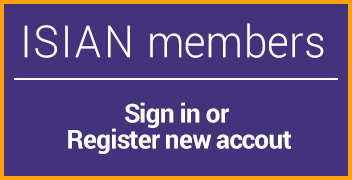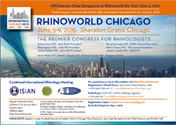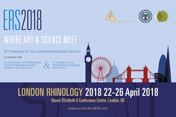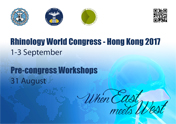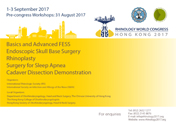The Growth and Development of the ISIAN
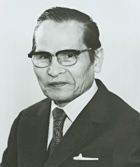
Emeritus professor
Ryo Takahashi
The International Symposium on Infection and Allergy of the Nose (ISIAN) was founded in 1976 by Professor Ryo Takahashi (now professor emeritus of The Jikei University School of Medicine) to encourage "discussion regarding the problems and topics of infection and allergy of the nasal cavity and paranasal sinuses." The first meeting was held from November 12 to 14, 1976, at the Imperial Hotel in Tokyo.
Four years later, the 2nd ISIAN meeting was held in Bologna, Italy, with Prof. Van Cauwenberge as the president, in conjunction with and with the strong support of the European Rhinologic Society (ERS). Thereafter, the 3rd to the 5th ISIAN meetings were held in Europe at 2-year intervals in conjunction with subsequent meetings of the ERS. Professor van Cauwenberge served as president of the 2nd ISIAN meeting, when Prof. Naumann of Germany was unable to chair the meeting as planned.
The ISIAN meeting would not have been so successful without the support of both the ERS and Prof. Van Cauwenberge. The Japan Rhinologic Society expressed its deep appreciation for the dedicated support to both the executive members of ERS and particularly to Prof. Van Cauwenberge.
The 3rd ISIAN meeting was held in 1982 in Stockholm, Sweden (with Prof. Drettner as the president of the ERS). The 4th ISIAN meeting was held in Nancy, France, in 1984 (with Prof. Wayoff as the president of the ERS), and the 5th ISIAN meeting was held in 1986 in Athens, Greece (with Prof. Coyas as the president of the ERS). Three consecutive ISIAN meetings were held in conjunction with ERS meetings, with Prof. Anggard as the president of the ISIAN. As a result, the ISIAN gradually became well known among European rhinologists. This widespread recognition of ISIAN is evidenced by the strong support of the ISIAN by the members of ERS over the past 10 years.
The 6th ISIAN meeting was held in Tokyo, with the ISIAN returning to its birthplace. Professor Yoshio Honda (now emeritus professor of The Jikei University School of Medicine) was the president. The 512 participants included 114 persons from 24 countries outside Japan, and 122 lectures were held. The success of this meeting showed that ISIAN had become a worldwide organization.
ISIAN returned to Europe with its 7th meeting, which was held in conjunction with the 12th ERS meeting in Amsterdam, the Netherlands, in 1988. The president was Prof. Huizing.
With its 8th meeting in 1989 being held for the first time in the Americas, ISIAN truly became an international society. The meeting was held in Baltimore, on the east coast of the United States, with Prof. David Kennedy of the Johns Hopkins University, who contributed to the development and promotion of endoscopic sinus surgery, as the president.
Thereafter, the president of the ERS meeting also served as the president of ISIAN meeting, when the ERS meeting was held in conjunction with the ISIAN every other year. Joint meetings were held in various European cities: Rome, Italy, in 1992; Copenhagen, Denmark, in 1994; Ghent, Belgium, in 1996; Vienna, Austria, in 1998; Barcelona, Spain, in 2000; Ulm, Germany, in 2002; Istanbul, Turkey, in 2004; Tampere, Finland, in 2006; and on Crete in 2008.
Year by year, the number of participants and presentations from Asian countries, including Japan and South Korea increased, and the ISIAN meeting became a truly global scientific congress. Every 2 years the ISIAN meeting is held separately from the ERS meeting in countries around the world. However, the 10th ISIAN meeting was held in Japan to mark the 10th anniversary of ISIAN. The 12th ISIAN meeting was held in Seoul, South Korea, and became the first meeting held in an Asian country other than Japan. The 14th ISIAN meeting was held in Brazil and was the first to be held in South America. The 16th ISIAN meeting, the second to be held in the United States, was hosted by Prof. Kennedy in Philadelphia. With this meeting, ISIAN became well known among rhinologists in the United States.
With the 18th ISIAN being held in Yaroslavl, Russia, and the 19th meeting being held in Manila, the Philippines, the only regions not to have hosted a meeting are the Middle East and Africa; this is further evidence that ISIAN has become a worldwide academic society.
The meetings following the one in the Philippines which were not held in conjunction with the ERS were held in Seoul, South Korea (president, Prof. Min) and in Sao Paulo, Brazil (president, Prof. Stamm).
China, the Middle East, and Africa are being considered for future meetings to further expand the international reach of the ISIAN in the field of rhinology.
The issue of the possible integration of ISIAN with the International Rhinologic Society has been discussed at business meetings of the ISIAN. However, restrictions on the selection of the host countries for ISIAN meeting are a concern, because some developing countries are not members of the International Rhinologic Society and would not be able to host large meetings of an international scale because of economic and other reasons. Therefore, for the near future, continuation of the present structure of the ISIAN is anticipated.
ISIAN meetings have been held in various regions around the world, including in developing countries, and has contributed to the development of international rhinology. The issue of ISIAN possibly becoming a society has been considered at board meetings, and administrative methods, by-laws, and offices are being discussed.
With the great contributions of the first general secretary, Toshio Ohnishi (The Jikei University School of Medicine), and the second general secretary, David Kennedy, ISIAN meetings have been held successfully for more than 30 years. Also, board members of ERS, European rhinologists, and Prof. van Cauwengerbe have made great contributions to the cause of ISIAN.
It is hoped that ISIAN meetings will continue to be held all over the world to contribute to the development of rhinology and to promote friendship and sharing of both clinical and basic science related to the nose and the upper airways amongst rhinologists across the globe.

